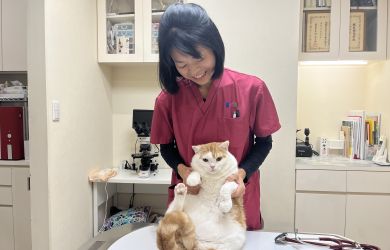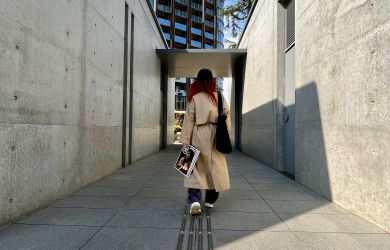
October 8, 2009
Sick of it All
A new rule promises to make public health insurance compulsory for foreigners living in Japan... or does it?
By Metropolis
Originally published on metropolis.co.jp on October 2009

Illustration by Phil Couzens
It’s fascinating what you can learn about the country you live in from what they say about it overseas. Last year, the US’s National Public Radio ran a glowing report on the state of Japan’s healthcare system. “So here’s a country with the longest life expectancy, excellent health results, no waiting lists and rock-bottom costs,” it gushed. “Hospital prices too low? That’s a problem a lot of countries would like.”
The sentiment has been echoed by other media outlets across the pond. As the debate about the future of American health care drags on, commentators are looking overseas to see how the rest of the world does things. And in Japan’s case, there seems to be a lot to like.
Yet it’s a system with which many foreigners living here seem uncomfortable, to say the least. We tiptoe around it with a mixture of trepidation and bewilderment, hampered in many cases by language and cultural barriers, but also by one other minor detail: a lot of us aren’t actually part of the system.
As most readers are probably aware, public health insurance is compulsory in Japan. Yet it’s an obligation that’s little enforced, and many foreign residents—and their employers—have managed to wriggle their way out of it.
That could all change from next year, though. On April 1 2010, a new visa guideline will come into effect, which states that people applying to renew or change the status of their visa should provide proof that they’re enrolled in the public health insurance scheme. The Ministry of Justice quietly announced this back in March, but the first that most people heard about it was from a July 28 article in The Japan Times with the title “New law: no dues, no visa.” Only it wasn’t quite as simple as that. It seldom is.
Japan’s public health insurance system can be traced back to 1922, when the government passed a law that provided coverage to workers at mines, factories and transportation companies. The move was motivated in part by a need to redress some of the economic inequalities that had emerged after the Meiji Restoration. Though it started with laborers, the system would expand over the next few decades to incorporate more of the working population. At the same time, a national pension plan also began to take form, and a concerted push led to universal public health and pension coverage finally being achieved in 1961.
There are now two main forms of health insurance in Japan: employees’ health insurance, or shakai hoken, which is for salaried workers, and National Health Insurance, or kokumin kenko hoken, which is typically used by people who are self-employed, unemployed or retired. The two health insurance schemes are run separately, and differ in a number of respects. Kokumin kenko hoken is administered on a municipal level, and people enrolled on it must pay the entire premium themselves. Shakai hoken is overseen by the central Social Insurance Agency (SIA), and the cost of payments is split equally with employers.
The SIA is also in charge of pension schemes: the National Pension (kokumin nenkin), for people on kokumin kenko hoken, and Employees’ Pension Insurance (kosei nenkin hoken), for people on shakai hoken. Pension and health insurance payments are made at the same time, and cannot be paid separately.
The extent of coverage under each health insurance scheme has varied over time. When it was first introduced, shakai hoken covered the entire cost of medical treatment, as well as fifty percent of the costs for dependents. Kokumin kenko hoken, by contrast, initially covered only half of the medical costs for both the insured and their dependents. A revision of the health insurance law in 1973 raised these amounts to 70 percent, while also imposing an upper limit on the cost that could be borne by the insured. For people over the age of 70, health treatment became effectively free: the portion of the price that they were expected to pay was covered by public funds.
Since then, the government has struggled to reconcile the noble intentions of the welfare state with the uglier financial realities. Double-digit growth in medical expenditures during the ’70s inspired a series of cost-cutting measures the following decade. In 1984, people on shakai hoken were required for the first time to cover ten percent of their costs. This was raised to 20 percent in 1997, and then to 30 percent in 2003—the highest such deductible in the world. Given the problems that the healthcare system faces in the future, a further rise is not unlikely.







